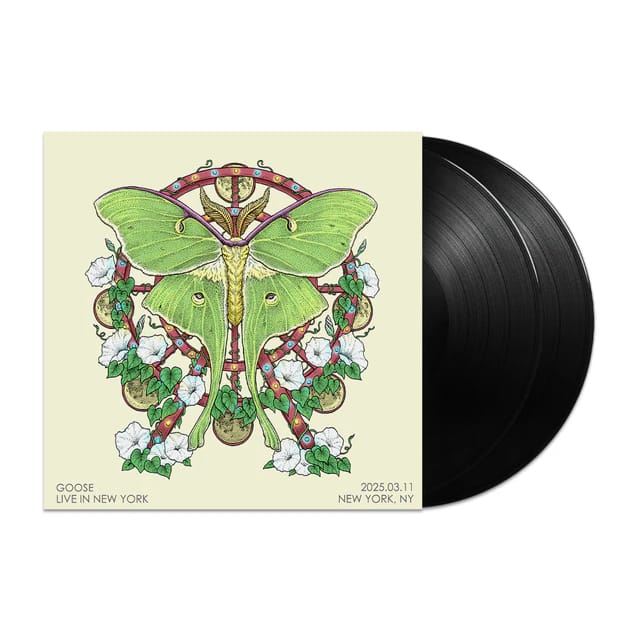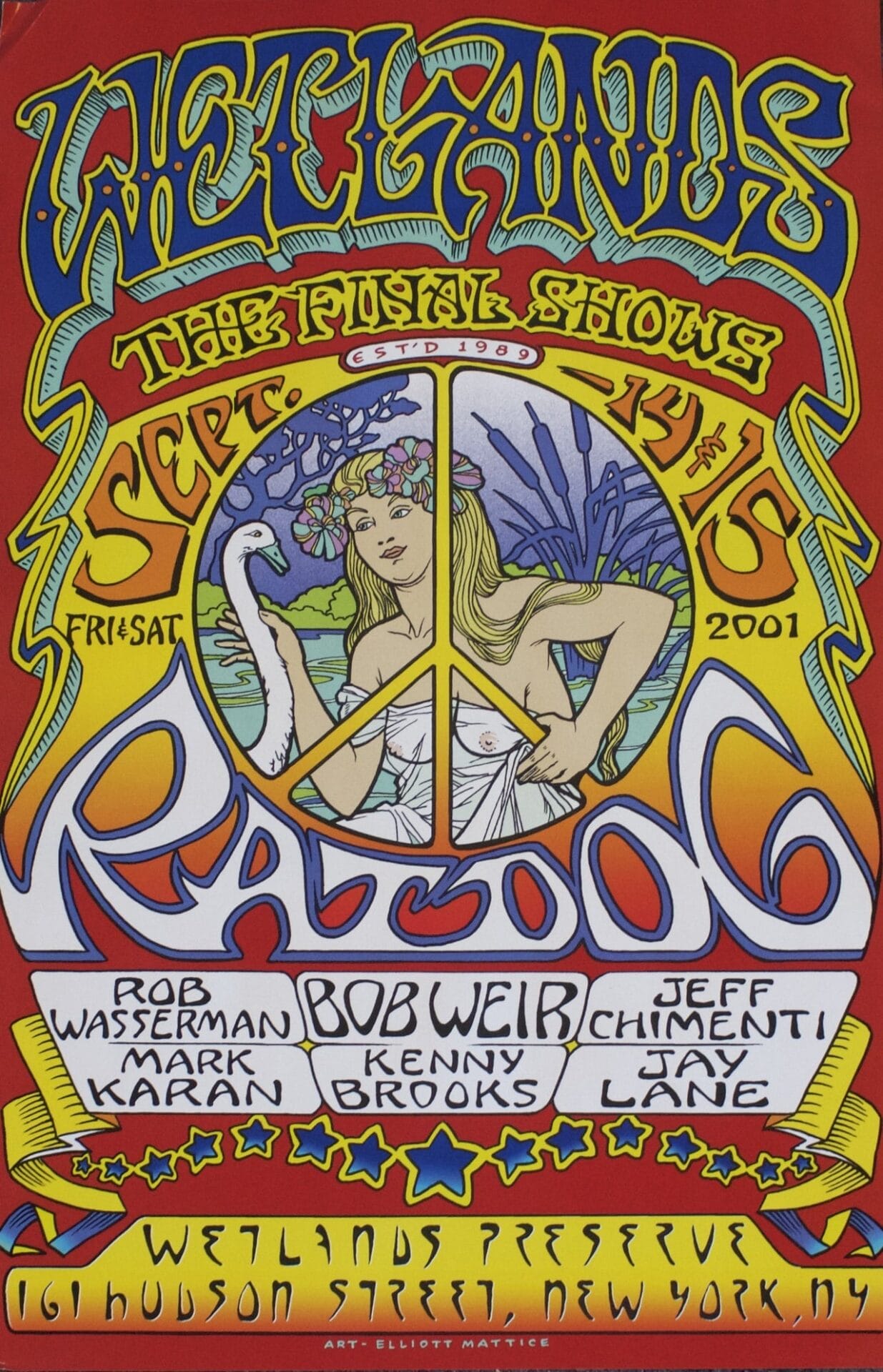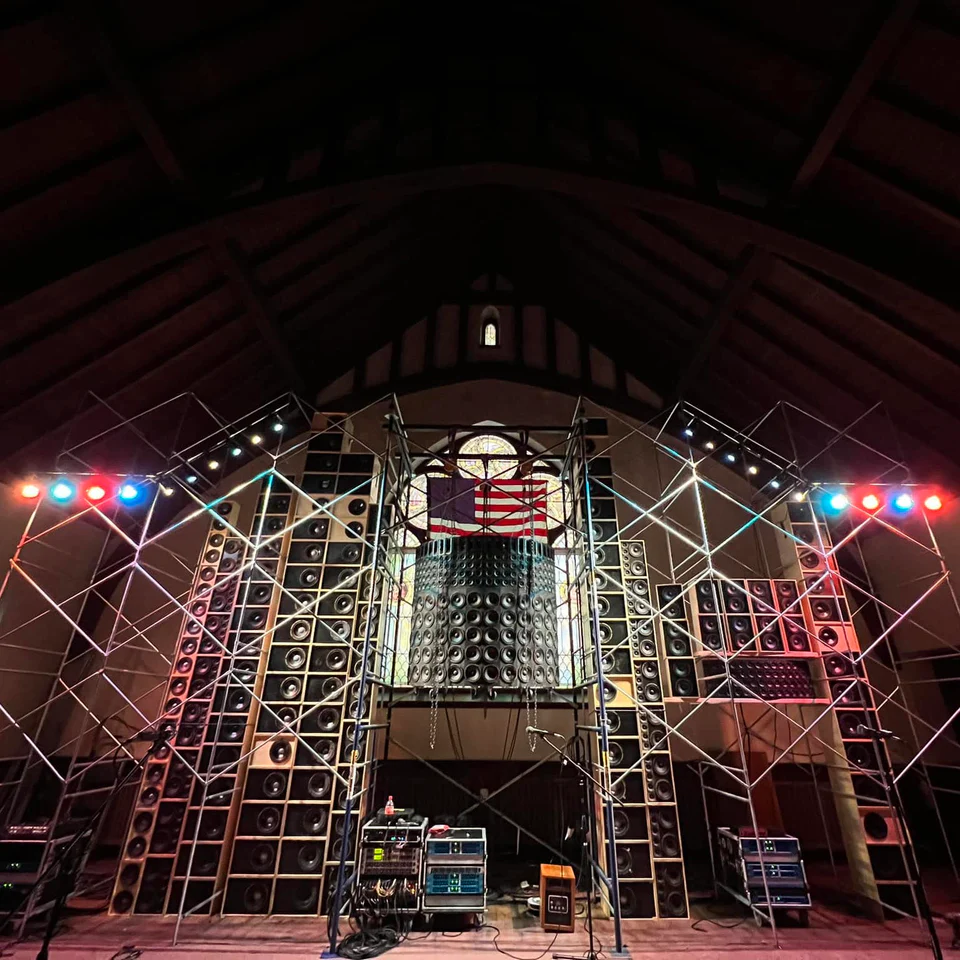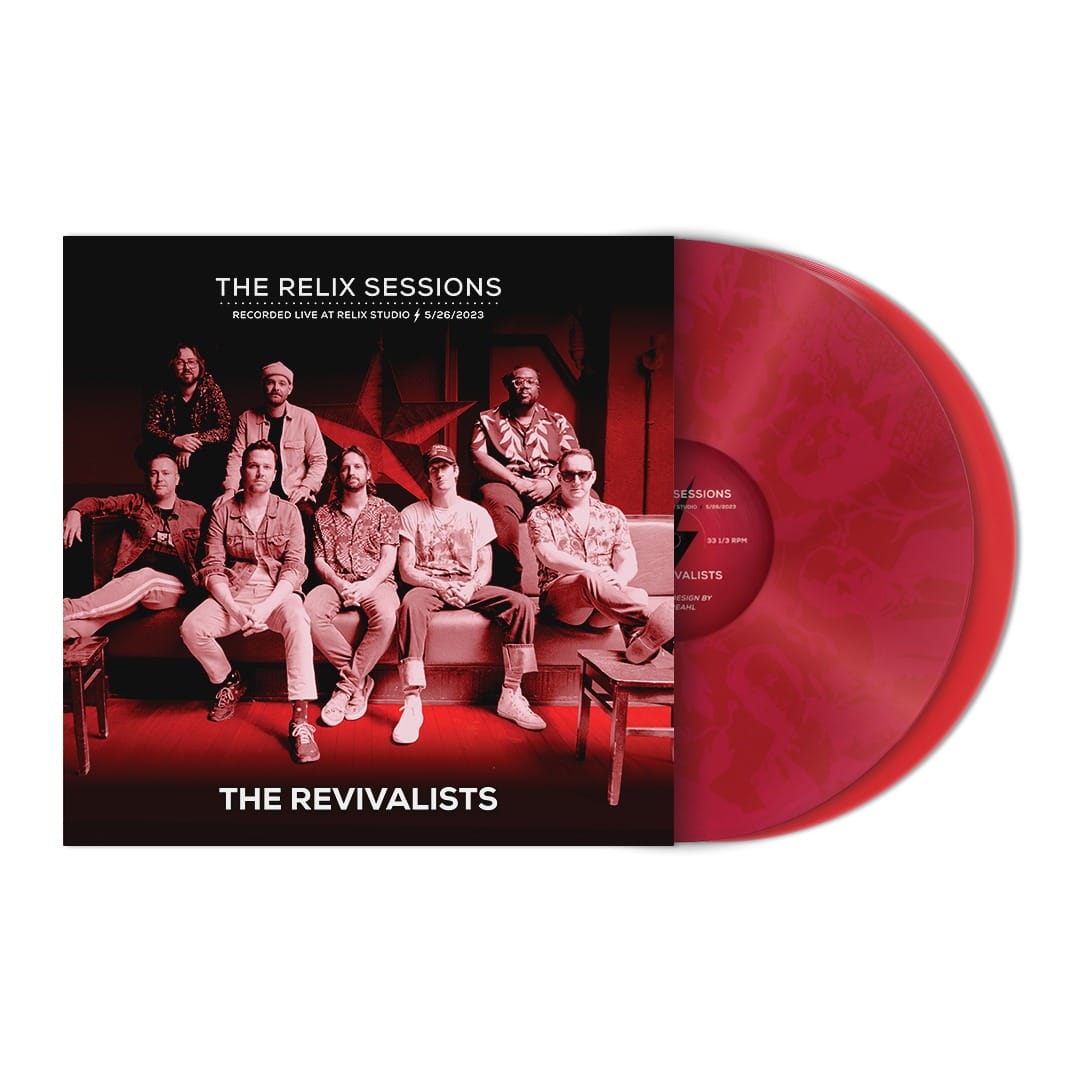Galactic & Irma Thomas: Where I Belong
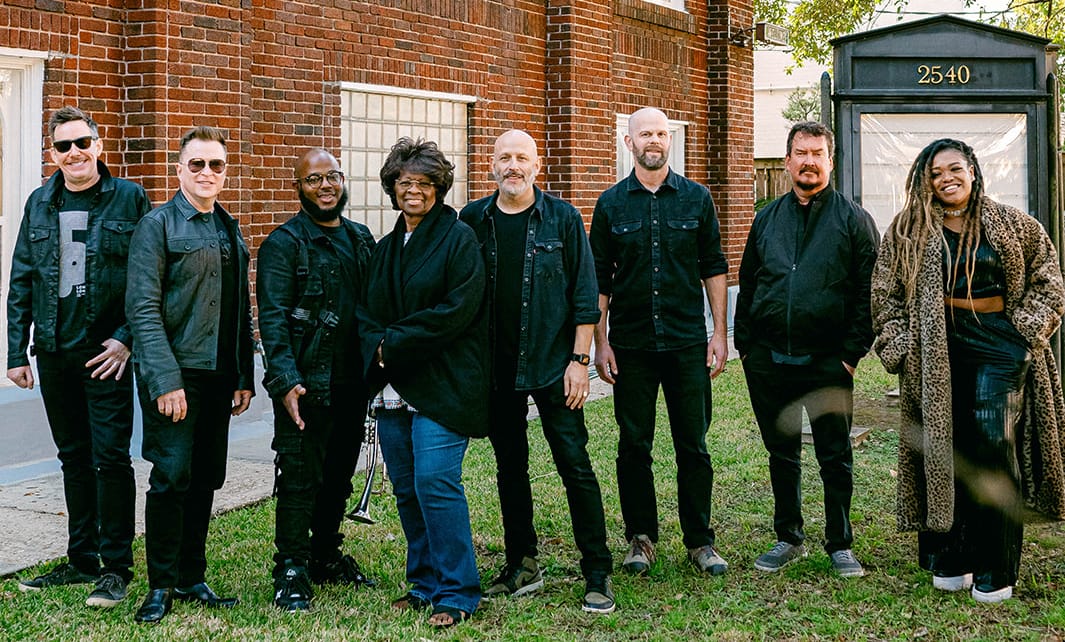
photo: Katie Sikora
***
The official roster announcement video for the 2025 New Orleans Jazz & Heritage Festival featured a familiar voice expressing a welcome musical sentiment.
More than six decades into her recording career, Irma Thomas, the Soul Queen of New Orleans, accompanied by local stalwarts Galactic, declared:
I guess I’m right where I belong
Still doing my thing, singing my song
I still got a love affair, with the sound of music in the air
Yeah, I’m right here, where I belong, still doing my thing, still singing my song
The Jazz Fest ad offered a rousing one-minute snippet of “Where I Belong,” from the artists’ new collaborative record, Audience with the Queen. This is not only Thomas’ first album in 17 years, but it also represents a satisfying follow-up to “Heart of Steel,” the track from Galactic’s 2010 Ya-Ka-May release in which they initially joined forces.
Thomas had started referring to “Where I Belong” as “the Jazz Fest song” after seeing it on local media, so it was fitting that she sang the track with Galactic on the final day of the event in May. They also played “Heart of Soul” and “Time Is on My Side,” the tune that Thomas had performed with The Rolling Stones on that very same stage in 2024, nearly 60 years after the Stones had heard her version of the song, then recorded it themselves.
Galactic bassist Robert Mercurio, who produced Audience with the Queen alongside bandmate Ben Ellman, says of Thomas’ Jazz Fest appearance with the group: “It was smiles and warmth all around. For ‘Where I Belong,’ Jelly [Joseph] and our two other background singers kind of flanked her, and it had this feeling of, ‘We’re here for you.’ It felt really amazing, and I’ve seen a lot of people on social media posting that it brought them to tears. It’s just an great feeling seeing somebody of her stature, her age and her history still doing it and still killing it. It’s really heartwarming.”
**
Audience With The Queen is a New Orleans record through and through.
In certain respects, it originated with the decision in 1977 by 14 area music fans (the Fabulous Fo’teen) to open a venue that could provide a home for celebrated pianist and composer Professor Longhair. Named after his song “Tipitina,” the club passed through a few hands until it eventually reached a dire financial state in December 2018, at which point it nearly closed. However, Galactic stepped into the breach and purchased the concert venue as something of a public service, given its history and import.
Fifteen months later, COVID threatened the future of the New Orleans institution. In an effort to help stave off further calamity, the band responded, in part, by establishing the Tipitina’s Record Club. This bi-monthly subscription service pledged to offer “archival milestones, never-before-heard rarities, out-of-print reissues and brand new recordings” on 180-gram, custom colored vinyl. The series debuted in February 2021 with a previously unheard private performance by Professor Longhair titled Fess at Home.
The TRC would go on to produce a steady slate of tantalizing records from iconic New Orleans artists, including Dr. John, Fats Domino, James Booker, Earl King, Ernie K-Doe and Donald Harrison. However, as Ellman notes, “One of the goals was to try to record new music as well, not just release old reissues or unheard things. We had a list of people who were still around that we would love to work with. We wanted to try and create a relevant, meaningful project with some of these older artists in New Orleans, and Irma, of course, was on the top of our list.”
Mercurio adds, “At first, when we were talking about the record, it was maybe going to be a stripped-down gospel record. At the same time, we were also talking about what the next Galactic record was going to be. So while we were trying to figure out the band and the sound for the Irma record, Galactic was trying to figure out what to do next. So it just kind of clicked, and we said, ‘Oh, why don’t we do this with her?’ We had done so many collaboration albums that we were like, ‘Let’s just do a single artist.’ When we approached the other Galactic guys, it was an easy yes. So we were off to the races.”
The band as a whole had deep admiration for Thomas and a positive prior experience with her during the Ya-Ka-May sessions. The idea behind that record was to present the many flavors of New Orleans. As Galactic drummer Stanton Moore said at the time, Ya-Ka-May was “designed almost to be a night out on the town seeing music with Galactic, as being hosted by us. So it’s almost as if we were bringing you along— ‘Hey, come check this out. Hey, come check this out.’”
Such a night on the town certainly would include quality time with Miss Irma Thomas. For two decades, she could often be found at the Lion’s Den, the club she owned with her husband Emile Jackson until they shut it down following Hurricane Katrina.
Thomas initially gained renown in her late teens, landing her first hit record in 1959 with “Don’t Mess with My Man.” She soon began working with Allen Toussaint and furthered her national reputation with “It’s Raining,” “Ruler of My Heart,” “Wish Someone Would Care” and “Breakaway.”
The vocalist sustained a career beyond these releases as a dynamic live performer who maintains an amiable relationship with her fans. Thomas explains, “My audience is my setlist. When my audience wants to hear a song and it’s not what I had planned to do, I do what the audience wants to hear. I’m not there to entertain me. I’m there to entertain my audience. I might introduce a few songs and say, ‘This is something I’ve just recorded, and I’d like to sing it for you.’ But then they’ll yell out what they want to hear and that’s what I sing.”
Thomas, who still participates in her church choir, remarks, “I can’t remember when I didn’t have a voice. I’ve been singing since I’ve been big enough to walk, and I thought everybody sung. It wasn’t something that I thought made me any different from anybody else because the people around me were singers. We all sung in the church and we sung when we didn’t have anything else to do to keep each other company. So there wasn’t anything unusual about me singing. It’s what everybody did around me.
“Eventually, I came to realize that I was given a gift. I’ve never had any voice training of any kind. The only training that I ever had was being a part of the school choir or the school play or whatever was going on. When you’re blessed with something, you’re supposed to share your blessing and pass it forward. So that’s what I do.”
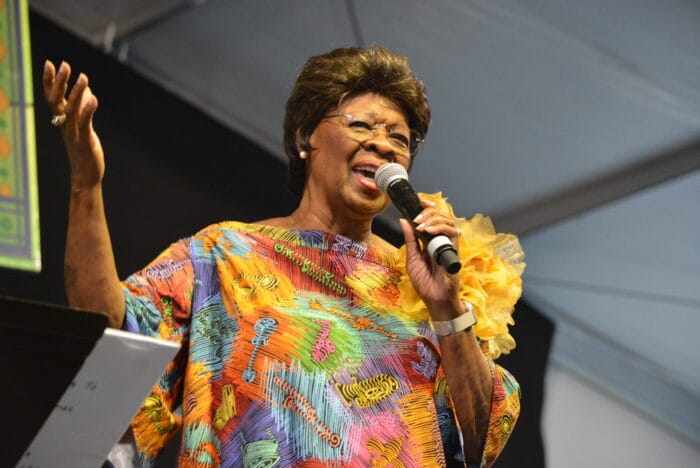
photo: Dean Budnick
Mercurio first experienced Thomas’ gift in the early ‘90s after moving to New Orleans from Washington, D.C., and attending college at Tulane.
He recalls, “When I first arrived, I was more about the funk and the brass band stuff. But over the years, I have become extremely fond of her and her catalog. I first saw her at the Audubon Park for a Mother’s Day performance. She used to play there annually. I remember it was extremely moving. She was a very elegant performer. At that time, New Orleans live music was about rocking the show and stuff like that. But then to see Irma, you could just feel like you were in the presence of somebody amazing—almost royalty. There’s a reason she’s called the Queen.”
Ellman, a California native—who relocated from Santa Cruz around the same time that Mercurio arrived— recollects, “I think the first time I saw her was at the Lion’s Den, or it could have been some other club, maybe even Tipitina’s. She’s just one of those amazing working musicians that a starry-eyed kid like me came to New Orleans to check out. On a regular basis, I would go to these barrooms and witness this incredible music on another level—these legacy musicians who were still performing, still doing the thing all over the city. She was part of the local music scene, which was incredible to see. Then, of course, you dig deeper, and you start learning about ‘Time Is on My Side’ and, of course, ‘Ruler of My Heart’ and ‘It’s Raining.’ And you realize she was on American Bandstand with Dick Clark and that she’s done all these things in her lifetime.”
As a result, she was a natural choice to appear on Ya-Ka-May. Ellman remembers that the nature of her performance on “Heart of Steel” altered the final arrangement of the track.
“When she came in to do ‘Heart of Steel,’ it was more of a traditional R&B song with lots of guitar and organ,” he points out. “We were just learning Pro Tools at the time, and we were recording ourselves. We had the track already done and Irma recorded to that. Then when she left, we just started muting things, going, ‘Her voice sounds so good stripped down. How do we focus on that?’ So she recorded to a very traditional song, and then we kind of flipped the script because her voice was so powerful. When you listen to our final version, most of it is really just drums and vocals. That’s really the basis of the whole song.
“I didn’t know if she even liked it until we heard that she was doing it in her set. We were so honored we couldn’t believe it. I mean, out of all those songs we did on that record, and really all of the records that we’ve done with all these guest singers, she’s probably the only one who includes one of those songs in their own set.”
“My band and I just enjoy doing the song,” Thomas affirms. “When we started doing it, we would all just go for it. My keyboard player Warner Williams, who passed away a couple of years ago, would get into this piano solo that would last a few minutes long. When we get on stage, whatever feelings we have up there, we put it into the song and have fun with it.
“When Galactic first approached me about doing that song, they said, ‘Miss Irma, we want you to sound younger and feel younger.’ Well, that’s exactly what happened; I did feel younger,” she laughs, then adds, “So when they asked me this time if I wanted to do another record, I said, ‘If you guys are up to it that’s fine by me. I don’t have a problem with it.’”
***
After the musicians made the commitment to work together, they needed to align on the tone of the album as a whole. One can imagine that such a project could have consisted of lost soul classics from the ‘50s and ‘60s, along with other material that Thomas already performed live. However, the band quickly dismissed this idea.
“We didn’t want to do that,” Mercurio indicates. “I don’t want to say it would be the easy way out, but we thought it would be kind of cheap to do that for our album with her. We’re not ones to record a bunch of covers, that’s not our style. We did one cover with her but even with that song, “How Glad Am I,” we decided we needed to rearrange it. We couldn’t just do Nancy Wilson’s version.
“The reason we even thought to do that is we saw her original TV performance with Dick Clark [on the Aug. 25, 1964, episode of American Bandstand]. He interviewed her and asked, ‘Who are some of your favorite artists?’ She listed Nancy Wilson as one of them. So we thought, ‘Well, if she loves Nancy Wilson, then maybe the song will connect.’ We mentioned it to her, and she had never performed it, but she knew it and really liked it. So we could have made a whole record like that, and it probably would’ve been a lot easier having the songs written, but we veered off that path.”
As for the overall feel of the album, Ellman notes, “Amazingly, Miss Irma was open to doing anything. She really was. She’s a working musician who’s opinionated but she really trusted us. When we started it, the long lost Leo Nocentelli album came out. [The Meters’ guitarist recorded Another Side in the early ‘70s, before the tapes disappeared for 50 years.] We all love that record and it was an inspiration. We were thinking that maybe we would do something like it—an acoustic, country-funk kind of thing, which was pretty much what Leo did.
“We knew that we weren’t going to do a bunch of covers, and we knew that we didn’t want it to necessarily sound like it was recorded in the ‘60s. For a little while, we struggled to find a direction. We didn’t want to do something retro, and we eventually realized that we wanted to do something a little more modern, a little more in the current Galactic world.”
“Another North Star for the record was Locked Down, the Dr. John album that Dan Auerbach produced,” Mercurio says. “We really love that one and it was kind of an influence in the background while we were thinking, ‘How do you approach working with a legend like this, who’s done it all?’ We thought that was a really cool record.”
Despite all the preparation and forethought, Mercurio and Ellman experienced some trepidation when sharing the initial results with Thomas. “I think the first song we recorded was ‘Puppet on Your String,’” the bassist recollects. “Then she came back to do ‘How Glad I Am’ a couple of weeks later and we played ‘Puppet on Your String’ for her. I remember she was sitting there with her headphones on, listening to the whole track and her eyes were shut, while she kind of moved her head around. Ben and I were nervous, like, ‘Uh-oh, what’s she going to say?’ Then she took off the headphones in her classic Irma way, very stone-faced and she said, ‘Is that me?’ We were like, ‘Yeah, that’s you.’ Then she goes, ‘I sound really good. You guys got me sounding really good. I sound so young on this track.’ That was a relief and it made the rest of the sessions a lot easier, although at that point, we didn’t really have much of the record written. We just wanted to create stuff that was different from those first two songs, which are a bit slower, in order to balance out the record.”
During the process of writing new material, the band took care not only to consider the instrumental feel, but also to craft lyrics that would be suitable and comfortable for the vocalist.
“What we typically do these days is we create an instrumental demo. From there, we’ll contact outside lyricists,” says Mercurio. “One thing we’ve figured out over the years is that none of us are really amazing lyricists, and collaborating with other people has broadened our songwriting. So we contacted some of our normal songwriter friends and let them know that we were going to be working with Irma.
“What happened, at first, was people would write great songs, but we didn’t think they would feel proper coming out of Irma’s mouth. There was some stuff about young love and certain subject matters that just didn’t seem authentic. She’ll be the first person to say, ‘I don’t really write songs, but I love to tell the story.’ So when she sees the lyrics or gets a demo, she needs to know what the story is in order to be able to sell it. So we went through a long process of working with different songwriters, and we landed with this local guy, Sean Carey, who’s worked with people from Mannie Fresh to The Soul Rebels. He’s kind of a behind-the-scenes guy in New Orleans.”
“Over the years, most of the songs I’ve done were written by somebody else,” Thomas elucidates. “My attitude is if the song has a storyline, then I can tell the story. Hopefully, that story will mean something to someone out there.”
A few of the tracks on Audience with the Queen focus on matters of the heart. She observes, “With ‘Puppet on Your String,’ that’s life. It’s about a person who cares a lot for somebody, but they don’t feel that person cares the same way about them. But, you know, that happens all around us.”
“Lady Liberty,” by contrast, shares a different perspective. It’s a potent commentary on social justice, in which Thomas intones, “Another Black man shot down last night and they keep adding up/ Is this the world that we’re living in?/ The one we raise our children in?/ Lord save us all/ Lady Liberty took a fall.”
Ellman reveals, “We were worried about that one and I have to say, one of the things that makes Miss Irma so amazing is that, if she feels like the story is good and she feels like she can connect to the story and she’s OK with saying the lyrics, then she’s OK with it. When we presented that song to her the original chorus was: ‘Another Black man shot down last night by the police, and they keep adding up.’ Miss Irma did not want to say that about the police, but she was OK with the message, so it was an easy rewrite.”
Thomas notes, “To me, it’s not a protest song. It’s a statement about what’s going on in the world today. It’s not just happening in New Orleans; it’s happening all across the world. All kinds of people are getting killed and shot over silly stuff and not really talking to each other and having conversations to resolve their anger. It’s a song that covers all countries, all cities, all states. This is a time where people don’t really sit down and have a conversation and try to resolve their anger with each other. Shooting sometimes seems to be the answer to everything and the words to ‘Lady Liberty’ kind of fit what’s happening.”
“The human voice can be so powerful. It’s an amazing instrument,” Mercurio remarks. “She added so much depth to tunes like ‘Lady Liberty’ in the way that she approached them given her history and the tone of her voice.”
Even so, Thomas doesn’t like to overanalyze or internalize her songs. “As a singing performer and an entertainer, if a song sounds good to me and it has a good story, I sing the song and tell the story,” she says. “I don’t try to project it into my life or anybody else’s life. If someone out there likes it and they feel that it’s something that’s part of what’s going on with them, then that’s what the song is about. When I’m in the studio recording, it’s as if I’m recording and singing to an audience. Even though I may have to sing a line more than one time, my mindset is that I’m performing to an audience.”
This is second nature to the vocalist, going back to her years in church, as well as her two decades at the Lion’s Den, which her husband had initially opened solely as a bar. That changed because, as Thomas recalls, “One year, I was rehearsing during Jazz Fest time, and some people were passing by outside. Then they came in, bought some liquor and sat down to hear me rehearse. Eventually during Jazz Fest, I started cooking red beans and rice, then inviting folks to come and have a bite to eat while I performed for them.”
Through her role at the Lion’s Den, she shares some commonalities with the members of Galactic. Although they didn’t discuss the nature of venue ownership during the recording sessions, Ellman points out, “While I’ve never talked club business with her, Miss Irma has always been a huge supporter of Tipitina’s. She’s always the first to come out in support of the Musicians’ Clinic or another cause. Anytime she’s asked for something that’s important, she’s going to be there.”
When asked about this, she responds, “Why not? If you have a talent and you can improve somebody’s life by being a part of a fundraiser for somebody, why would you not do so? What set me in motion back at the beginning of my career was survival. I didn’t have any skills. I was working at the time and I got fired for singing on the job. I had children that I needed to feed and singing was another way. I didn’t realize I could make a living at it, but I wound up doing it. So it wasn’t something that I chose, it chose me. I always keep all of that in mind.”
***
The process of recording Audience with the Queen was a gradual one, as the songs were written and recorded piecemeal. Eventually, Carey was invited to the sessions in order to facilitate the creation of the tunes they were working on.
“After he wrote ‘Lady Liberty,’ Sean would come out and talk with Irma between takes,” Mercurio says. “They would sit together, and he would take little snippets of the subjects that they would talk about and incorporate them into the songs. Then every time she’d receive a new song, she’d be like, ‘This guy just gets me.’”
“Evidently, my conversation was interesting enough for them that they found something in it to write songs about,” Thomas laughs. “So whatever works, works.”
Indeed, this is the method that led to the creation of “the Jazz Fest song.”
As Thomas recollects, “We were talking about some of the tours that I had been on and some of the incidents that happened on some of the tours. Again, I don’t analyze songs. I look at the lyrics and if they tell a good story, I’ll record it. Well that song just happened to be where I am at this point in my life. I’m 84 years old and I still love what I’m doing. I don’t have any intention to stop performing, even though I don’t perform as often as I used to because I don’t have that kind of energy. But I love what I’m doing and I’m still singing. So I’m right where I belong.”




